Astrology has been a subject of fascination for centuries, with many people turning to the stars for guidance and self-discovery. But understanding an astrological chart can feel like decoding a complex puzzle. How do you make sense of the symbols, signs, and planetary placements? In this detailed guide, we will walk you through the step-by-step process of reading and interpreting an astrological chart. By breaking down the components, understanding the houses and zodiac signs, deciphering planetary aspects, and analyzing the meanings of each planet, we will help you navigate the intricacies of this ancient art. So, let us embark on a journey of celestial exploration and unlock the insights hidden within your astrological chart.
Contents
- What is an Astrological Chart?
- Decoding the Astrological Houses
- Interpreting Planetary Aspects
- Reading and Analyzing the Planets
- Putting It All Together
- Conclusion
-
Frequently Asked Questions
- 1. Can an astrological chart predict the future?
- 2. How accurate are astrological charts?
- 3. Can I create my own astrological chart?
- 4. Do I have to believe in astrology to benefit from an astrological chart?
- 5. How often should I refer to my astrological chart?
- 6. Can astrology help in making important life decisions?
- 7. Are astrology and astronomy the same thing?
- 8. Can astrological compatibility determine the success of a relationship?
- 9. Are there differences in astrological charts for different cultures?
- 10. Is it possible to change my astrological chart?
- References
-
Frequently Asked Questions
- 1. How accurate are astrological charts?
- 2. Can I rely solely on my astrological chart for decision-making?
- 3. Can astrology predict the future?
- 4. How can I find my astrological chart?
- 5. What does the rising sign in a chart represent?
- 6. Can I interpret my astrological chart on my own?
- 7. What is the significance of planetary aspects in a chart?
- 8. How do astrologers determine the meaning of each planet in a chart?
- 9. Can astrology help in understanding relationships?
- 10. Are astrology and astronomy the same thing?
- References
- Read More
What is an Astrological Chart?
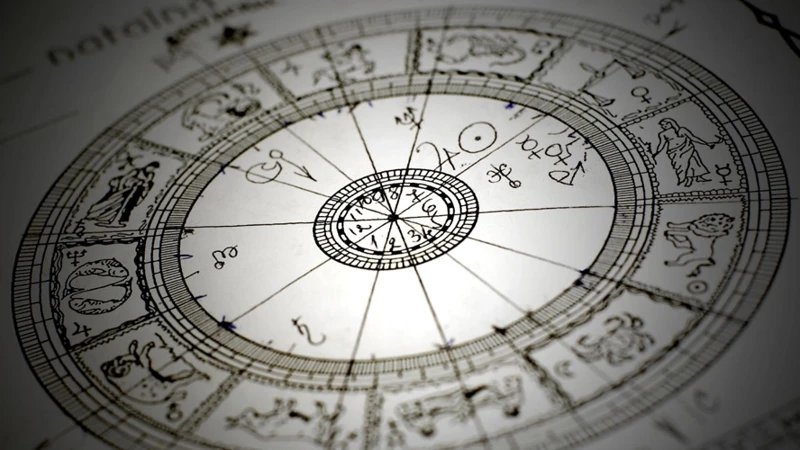
An astrological chart, also known as a birth chart or natal chart, is a map of the positions of the celestial bodies at the time of a person’s birth. It serves as a snapshot of the cosmic energies that were present at the moment of their arrival into the world. This chart is based on the principles of astrology, which assert that the positions and movements of the planets, the sun, and the moon directly influence and reflect an individual’s personality traits, life events, and overall destiny. An astrological chart is divided into various sections or segments, each representing different aspects of a person’s life, such as their relationships, career, and personal growth. By understanding the symbols, signs, and planetary positions within the chart, astrologers can gain deep insights into a person’s character, tendencies, strengths, and challenges. The chart includes twelve astrological houses, representing different areas of life, and is calculated based on the person’s birth date, time, and location. Each house corresponds to a specific zodiac sign, and the planetary placements within these houses can reveal valuable information about a person’s life experiences and potentials.
1. The Basics
The basics of reading and interpreting an astrological chart involve understanding the key components and symbols within the chart. The chart consists of a circular diagram that represents the celestial sphere, with the Earth positioned at the center. The outer circle represents the zodiac, which is divided into twelve equal sections or signs. Each sign corresponds to a specific time period and has unique characteristics and ruling planets associated with it. The inner part of the chart contains various symbols representing the planets, such as the sun, moon, and other celestial bodies. Each planet has its own significance and influences different aspects of a person’s life. The position of these planets within the zodiac signs and houses determines their energies and influences on an individual. Additionally, the aspects, or the angles formed between the planets, reveal the dynamic relationships and interactions between these planetary energies. By examining the signs, houses, planets, and aspects within the chart, astrologers can gain valuable insights into a person’s personality, strengths, challenges, and life events. Understanding these basics is crucial for diving into the intricate world of astrological chart interpretation.
2. Components of an Astrological Chart
The components of an astrological chart are key elements that provide insights into an individual’s personality and life experiences. These components include the planets, zodiac signs, astrological houses, and aspects. The planets represent different energies and archetypes that influence a person’s characteristics and behaviors. Each planet has a specific meaning and significance in astrology, such as the Sun symbolizing ego and self-expression, the Moon representing emotions and intuition, and Mercury symbolizing communication and intellect. The zodiac signs, on the other hand, reflect different qualities and characteristics that individuals may possess based on their birthdates. There are twelve zodiac signs, each associated with specific traits and elements. The astrological houses represent different areas of life and indicate where certain energies and experiences manifest. They range from the first house, which symbolizes self-identity and appearance, to the twelfth house, which represents subconscious patterns and spirituality. Aspects refer to the angles formed between planets in the chart and provide information about the relationship between these energies. They can be harmonious or challenging and offer further insights into a person’s strengths, challenges, and potential areas of growth. Understanding these components and their interactions within the astrological chart is crucial in interpreting and decoding the fascinating world of astrology.
3. Understanding the Zodiac Signs
Understanding the zodiac signs is essential for interpreting an astrological chart accurately. The zodiac is divided into twelve signs, each representing distinct characteristics and qualities associated with individuals born under them. Aries, Taurus, Gemini, Cancer, Leo, Virgo, Libra, Scorpio, Sagittarius, Capricorn, Aquarius, and Pisces make up the zodiac signs. Each sign is associated with one of the four elements: fire, earth, air, or water, which further influences their traits and behaviors. For example, fire signs (Aries, Leo, and Sagittarius) are known for their passion, assertiveness, and enthusiasm, while earth signs (Taurus, Virgo, and Capricorn) are grounded, practical, and focused on material stability. Air signs (Gemini, Libra, and Aquarius) are intellectual, social, and communicative, while water signs (Cancer, Scorpio, and Pisces) are highly intuitive, emotional, and sensitive. Understanding the zodiac signs allows astrologers to interpret the energies and tendencies of individuals based on their sun sign, which represents their essential self and core identity. By analyzing the placement of a person’s sun sign and its aspects within their astrological chart, astrologers can delve deeper into their personality traits and life patterns. This knowledge helps in providing guidance and insights into areas such as relationships, career choices, and personal development. So, whether you’re a fiery Aries seeking compatibility with an earth sign like Ophiuchus or an artistic and creative individual exploring your unique Ophiuchus personality traits, understanding the zodiac signs is key to unlocking the richness of your astrological chart.
Decoding the Astrological Houses
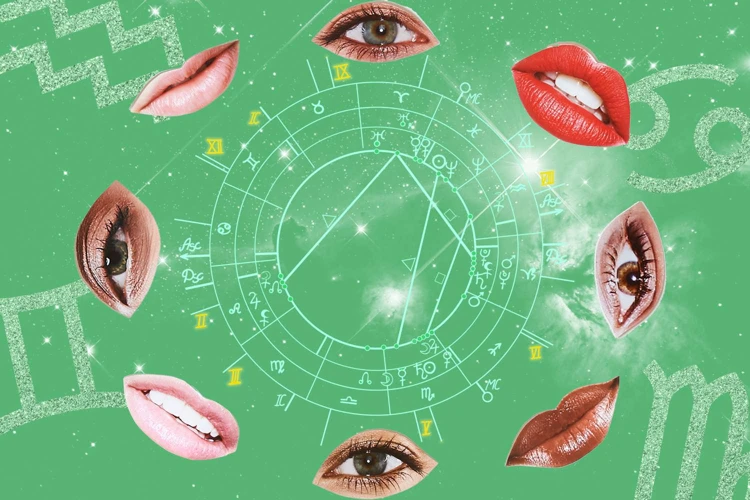
Decoding the astrological houses is a vital step in understanding an astrological chart. The chart is divided into twelve houses, each representing different areas of a person’s life and experiences. These houses provide insights into specific aspects such as relationships, career, personality, and spirituality. Let’s explore the significance of each house:
1. The first house, also known as the Ascendant, represents the individual’s self-image, appearance, and overall demeanor. It signifies how they present themselves to the world and their approach to life.
2. The second house relates to finances, possessions, and self-worth. It reflects one’s values, material resources, and attitudes towards money.
3. The third house represents communication, siblings, short trips, and learning. It reflects how an individual communicates, gathers information, and engages with their immediate environment.
4. The fourth house is associated with home, family, roots, and inner emotions. It reveals one’s sense of belonging, ancestral heritage, and the foundation of their emotional well-being.
5. The fifth house governs self-expression, creativity, romance, and children. It reflects personal passions, artistic pursuits, and the capacity for fun and pleasure.
6. The sixth house represents work, service, health, and daily routines. It reflects a person’s approach to responsibility, physical well-being, and the need for practical order.
7. The seventh house symbolizes partnerships, marriage, and significant relationships. It reflects an individual’s approach to collaboration, harmony, and their perception of others.
8. The eighth house is associated with transformation, shared resources, and intimacy. It reveals psychological depths, sexual energies, and experiences related to inheritance and joint finances.
9. The ninth house encompasses higher education, spirituality, travel, and belief systems. It reflects one’s exploration of the world through intellectual pursuits, spiritual growth, and cultural experiences.
10. The tenth house, also known as the Midheaven, represents career, public image, and aspirations. It reflects one’s professional ambitions, achievements, and their reputation in society.
11. The eleventh house relates to friendships, social networks, and long-term goals. It reflects one’s involvement in groups, collective ideologies, and their aspirations for the future.
12. The twelfth house represents spirituality, subconscious mind, and hidden matters. It reflects solitude, retreat, and the individual’s connection to the divine or their unconscious mind.
Understanding the purpose and characteristics of each house in an astrological chart can provide valuable insights into an individual’s life experiences and areas of focus. By considering the planetary placements within each house, astrologers can uncover significant themes and patterns that shape a person’s journey.
1. The Twelve Houses
1. The Twelve Houses in an astrological chart represent different areas of life and specific aspects of a person’s existence. Each house is associated with a particular zodiac sign and holds unique significance. Let’s explore the houses and their meanings:
1st House (Ascendant): This house represents the self, physical appearance, personality, and how others perceive you. It is also known as the house of self-expression.
2nd House: The second house is associated with personal finances, material possessions, and self-worth. It reveals insights into how an individual values themselves and their resources.
3rd House: This house is linked to communication, short journeys, siblings, and the mental realm. It reflects how an individual thinks, communicates, and processes information.
4th House (IC): The fourth house represents the home, family, roots, and the nurturing side of life. It reflects one’s upbringing, family dynamics, and emotional well-being.
5th House: This house relates to creativity, romance, children, and self-expression. It highlights one’s artistic inclinations, hobbies, love affairs, and the pursuit of pleasure.
6th House: The sixth house governs daily routines, work, health, and service to others. It provides insights into a person’s approach to work, lifestyle habits, and overall well-being.
7th House (Descendant): In relationships, partnerships, marriage, and collaborations. The seventh house shines a light on one’s significant partnerships, both personal and professional.
8th House: This house is associated with transformation, shared resources, intimacy, and the mysteries of life. It reveals insights into deep emotional connections, inheritances, and spiritual growth.
9th House: The ninth house is connected to higher education, philosophies, spirituality, and long-distance travel. It represents one’s quest for knowledge, beliefs, and expanded horizons.
10th House (MC): The tenth house is linked to career, reputation, public image, and achievements. It reflects an individual’s professional aspirations, public standing, and life goals.
11th House: This house pertains to friendship, social networks, community involvement, and aspirations. It highlights one’s hopes, dreams, and connections with like-minded individuals.
12th House: The twelfth house relates to solitude, spirituality, subconscious mind, and hidden matters. It signifies the inner realms, subconscious patterns, and the need for seclusion or introspection.
Understanding the significance of each house is crucial in interpreting an astrological chart and gaining deeper insights into different aspects of a person’s life journey and experiences. So, let’s continue unraveling the mysteries of astrology as we delve further into the components of an astrological chart.
2. The Significance of Each House
The twelve houses in an astrological chart each hold significant meaning and represent different aspects of a person’s life. Let’s explore the significance of each house:
1. The First House: This house represents the self, the individual’s personality, physical appearance, and how they project themselves to the world. It is associated with self-expression and how one presents themselves to others.
2. The Second House: This house is related to finances, possessions, material resources, and personal values. It reflects how a person earns money, their attitude towards wealth, and their relationship with material possessions.
3. The Third House: This house is associated with communication, learning, siblings, and short-distance travel. It represents one’s communication style, mental abilities, and relationship with their siblings.
4. The Fourth House: Known as the House of Home and Family, this house signifies one’s roots, family background, parents, and home life. It reflects a person’s sense of security, emotional well-being, and connection to their ancestral lineage.
5. The Fifth House: This house is related to creativity, self-expression, romance, and children. It represents a person’s artistic pursuits, hobbies, romantic relationships, and their attitude towards parenthood.
6. The Sixth House: This house is associated with work, health, daily routines, and service. It represents a person’s approach to work, physical health, and their sense of duty and responsibility towards others.
7. The Seventh House: This house is the realm of partnerships, relationships, marriage, and open enemies. It reflects a person’s approach to relationships, their need for companionship, and their capacity for cooperation.
8. The Eighth House: Known as the House of Transformation, this house represents intense experiences, shared resources, and personal growth. It reflects one’s attitude towards change, the mysteries of life, and their ability to heal and transform.
9. The Ninth House: This house is associated with spirituality, higher education, travel, and philosophy. It represents one’s quest for knowledge, belief systems, and their spiritual and philosophical views.
10. The Tenth House: Also known as the Midheaven, this house is related to career, public image, reputation, and social status. It reflects a person’s professional aspirations, achievements, and their standing in society.
11. The Eleventh House: This house signifies friendship, social groups, aspirations, and humanitarian causes. It represents one’s involvement in communities, group consciousness, and their aspirations for the future.
12. The Twelfth House: Known as the House of the Subconscious, this house is associated with spirituality, hidden strengths, and hidden enemies. It reflects one’s unconscious fears, limitations, and their connection to the spiritual realm.
Understanding the significance of each house is crucial for interpreting an astrological chart and gaining a deeper understanding of a person’s life path and potentials. By analyzing the planets and signs within each house, astrologers can provide valuable insights and guidance.
Interpreting Planetary Aspects
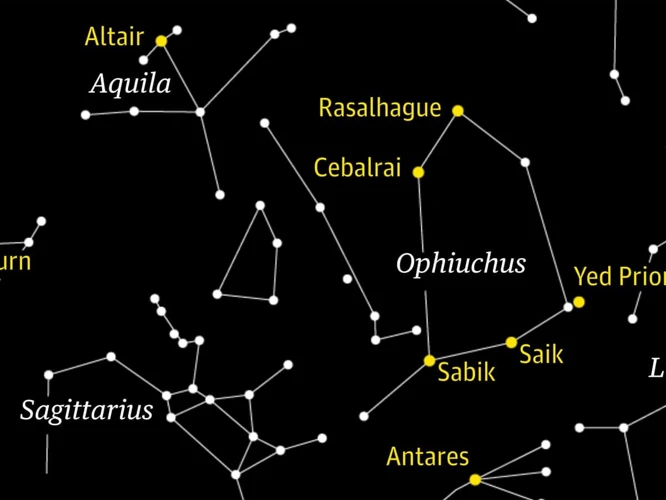
Interpreting planetary aspects is a crucial step in understanding an astrological chart. Planetary aspects refer to the angles or relationships formed between the planets in the chart. These aspects can have a significant impact on a person’s personality traits, challenges, and opportunities. There are various types of major aspects that astrologers analyze, including conjunctions, oppositions, trines, squares, and sextiles. Conjunctions occur when planets are in close proximity to each other, blending their energies and intensifying their influences. Oppositions happen when planets are directly across from each other, creating tension and highlighting the need for balance and integration. Trines represent harmonious connections, indicating areas of natural talents and ease. Squares indicate inner conflicts and challenges that need to be overcome for growth and transformation. Sextiles represent opportunities for growth and learning. Each aspect carries its own unique energy and significance.
In addition to major aspects, there are also minor aspects that can provide additional insights. These include quincunxes, semi-sextiles, and sesquiquadrates. Quincunxes represent adjustments and the need for adaptability in certain areas of life. Semi-sextiles indicate subtle influences that require attention and integration. Sesquiquadrates signify tension and the need for adjustments in order to find balance.
Analyzing aspect patterns is another important aspect of interpreting planetary aspects. Aspect patterns are specific formations that involve multiple aspects and planets. They offer a deeper understanding of the overall dynamics and complexities within the chart. Some common aspect patterns include grand trines, stelliums, and T-squares. A grand trine occurs when three planets form a triangle, indicating a flow of harmonious energy. A stellium happens when there are three or more planets in close proximity, intensifying their collective influence. A T-square is formed when there are two planets in opposition, both of which are square to a third planet, creating a dynamic tension that needs to be resolved.
By analyzing the planetary aspects and aspect patterns within an astrological chart, astrologers can uncover valuable information about an individual’s strengths, challenges, and life themes. These aspects provide insight into relationships, career paths, and personal growth opportunities. The study and interpretation of planetary aspects are essential in gaining a comprehensive understanding of the individual’s chart and the forces at play in their life journey.
1. Major Aspects
Major aspects in astrology refer to the angular relationships between planets in an astrological chart. These aspects are considered significant as they highlight the energetic connections and influences between the celestial bodies. There are several major aspects that astrologers commonly analyze:
1. Conjunction: A conjunction occurs when two planets are in close proximity to each other, usually within the same zodiac sign. This aspect magnifies the combined energy of the planets involved and can indicate a strong emphasis on the traits and themes associated with those planets.
2. Opposition: An opposition arises when two planets are directly across from each other in the chart, creating a 180-degree angle. This aspect represents a tension or conflict between the energies of the planets involved, requiring balance and integration.
3. Square: A square aspect occurs when two planets are approximately 90 degrees apart, creating a challenging dynamic. This aspect often signifies inner tension, obstacles, and the need for growth through overcoming difficulties.
4. Trine: A trine is formed when two planets are approximately 120 degrees apart. This aspect indicates a harmonious and favorable connection between the planets, often leading to ease, opportunities, and natural talents in the areas associated with those planets.
5. Sextile: A sextile aspect occurs when two planets are approximately 60 degrees apart. This aspect represents opportunities, support, and positive interaction between the energies of the planets involved. It can indicate potential for growth, creativity, and favorable circumstances.
By understanding these major aspects in an astrological chart, astrologers can discern the underlying dynamics and themes that influence a person’s life. These aspects provide valuable insights into areas such as relationships, career paths, and personal development, allowing individuals to navigate their lives with greater awareness and understanding. To delve deeper into the topic of astrological aspects, you can explore astrological research studies that provide empirical data and findings on the effects of planetary configurations.
2. Minor Aspects
Minor aspects in astrology refer to the connections or angles formed between the planets that may not be as significant as the major aspects but still hold valuable information. These aspects include the semi-sextile, quincunx, and inconjunct aspects, among others. Although minor aspects may not have the same strength or intensity as major aspects, they add nuances and subtleties to the overall astrological interpretation. For example, a quincunx aspect between two planets indicates a need for adjustment and integration, as the energies of these planets may not naturally blend together. It highlights areas of tension and requires conscious effort to find balance and harmony. Similarly, the inconjunct aspect heightens the need for adaptation and flexibility, as it represents a lack of compatibility or understanding between the involved planets. While minor aspects may not be as widely discussed or emphasized, they contribute to the intricate web of astrological influences and provide additional layers of insight into a person’s chart. By considering both the major and minor aspects, astrologers gain a more comprehensive understanding of the dynamics and complexities present in an individual’s astrological chart.
3. Analyzing the Aspect Patterns
Analyzing the aspect patterns in an astrological chart is an essential step in understanding the complex web of energies at play. Aspects refer to the angles or relationships between planets, and they can have a significant influence on a person’s life and personality. There are several major aspects that astrologers consider, such as the conjunction, which occurs when planets are close together and amplify each other’s energies. The opposition, on the other hand, represents a tension or balancing act between two opposing forces. The square aspect signifies challenges and growth opportunities, while the trine brings harmony and flow. There are also minor aspects to consider, such as the sextile and the quincunx, which add additional layers of complexity to the interpretation. It is important to examine the aspects in relation to the specific houses and signs they fall in, as this can provide further insight into how these energies manifest in different areas of life. Analyzing aspect patterns involves identifying clusters of planets and their relationships to one another, which can indicate certain themes or dynamics at play. For example, a grand trine pattern, where three planets form equilateral triangles, signifies a harmonious flow of energy. On the other hand, a T-square pattern, which consists of two planets in opposition, both squaring a third planet, represents a point of tension and potential conflict. By recognizing and interpreting these aspect patterns, astrologers can gain deeper insights into a person’s tendencies, patterns, and potential life experiences.
Reading and Analyzing the Planets
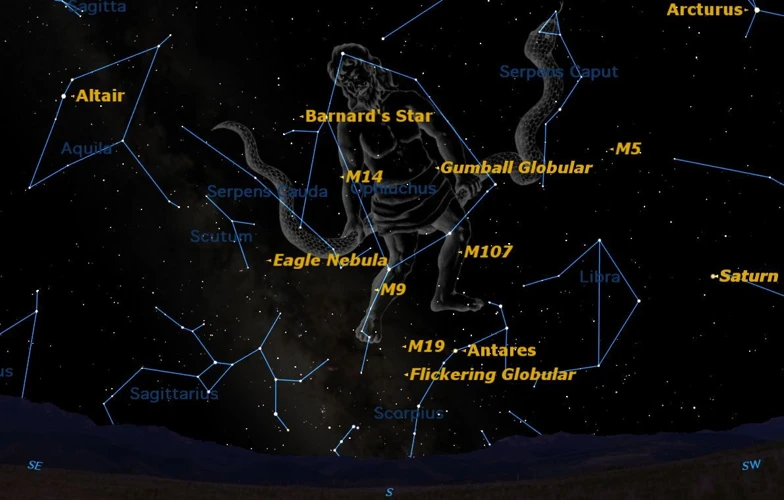
When reading and analyzing the planets in an astrological chart, it is essential to consider the specific energies and symbolism associated with each celestial body.
1. The Sun: The Sun represents the core essence and vitality of an individual. It reveals the person’s basic personality traits and their ego expression. The Sun’s placement in a particular zodiac sign provides insights into the person’s character and overall life purpose.
2. The Moon: The Moon represents emotions, intuition, and the subconscious mind. It reflects a person’s emotional needs, instincts, and how they express their nurturing and care. The Moon’s placement and aspects can indicate the individual’s emotional responses, instincts, and the emotional patterns that influence their behavior.
3. Mercury: Mercury relates to communication, intellectual abilities, and thought processes. It governs how we express ourselves, process information, and make decisions. The placement of Mercury determines the individual’s communication style, thinking patterns, and learning abilities.
4. Venus: Venus is associated with love, beauty, and harmony. It represents our values, relationships, and aesthetic preferences. The position of Venus in the chart reveals the person’s approach to love, romantic tendencies, and how they attract and maintain relationships.
5. Mars: Mars symbolizes energy, ambition, and assertiveness. It represents our drive, physical energy, and how we assert ourselves. The placement of Mars shows how individuals take action, pursue their goals, and handle conflicts or challenges.
6. Jupiter: Jupiter is the planet of expansion, growth, and abundance. It represents opportunities, luck, and philosophical beliefs. Jupiter’s placement indicates the areas of life where individuals experience growth, expansion, and opportunities for success.
7. Saturn: Saturn is associated with discipline, responsibility, and limitation. It reflects the challenges, lessons, and areas of life where individuals need to work hard and demonstrate endurance. Saturn’s placement reveals the life areas that require structure, commitment, and self-discipline.
8. Uranus: Uranus symbolizes innovation, change, and liberation. It represents individuality, uniqueness, and unconventional thinking. Uranus’ placement indicates where individuals seek freedom, independence, and express their individuality.
9. Neptune: Neptune represents dreams, spirituality, and intuition. It reflects our connection to the divine, imagination, and psychic abilities. The placement of Neptune indicates how individuals navigate the realms of dreams, illusions, and their spiritual journey.
10. Pluto: Pluto symbolizes transformation, power, and deep psychological processes. It represents endings, rebirth, and personal evolution. Pluto’s placement reveals the transformative areas of life, where individuals experience inner growth and profound change.
By examining the positions and aspects of these planets, astrologers can gain a deeper understanding of a person’s character, motivations, and life experiences. It is important to remember that each planet’s interpretation is interconnected with other factors in the chart, such as the zodiac signs and houses they are placed in. This holistic approach allows for a comprehensive analysis of an individual’s astrological makeup, providing valuable insights into their unique personality and life path. [Link: /artistic-creative-ophiuchus-personality/]
1. The Sun and Its Influence
1. The Sun is a vital player in an astrological chart, representing the core essence of a person’s identity and individuality. It symbolizes self-expression, creative energy, and the conscious awareness of the self. The Sun’s placement in a specific zodiac sign reveals prominent personality traits and areas of focus for the individual. For example, those born under the fiery sign of Aries may display boldness, leadership qualities, and a strong desire for independence. On the other hand, individuals with the Sun in the gentle sign of Pisces may exhibit compassion, intuition, and a deep connection to spirituality. The Sun’s aspects to other planets in the chart further shape and influence its expression. Certain aspects, such as the conjunction (when the Sun is in close proximity to another planet), amplify the energy of both planets and create stronger emphasis in the individual’s life. The position of the Sun in a particular house also provides insights into the areas of life where the person seeks to shine and make an impact. For instance, having the Sun in the 10th house may indicate a strong drive for career success and recognition. Understanding the placement and aspects of the Sun in an astrological chart allows astrologers to gain a deeper understanding of an individual’s central motivations, aspirations, and sense of purpose in life. So, whether you have a Sun in the fiery Leo or the analytical Virgo, exploring its influence can provide valuable insights into your unique identity and life journey.
2. The Moon: Emotions and Intuition
The Moon holds significant sway over our emotions and intuition in astrological chart interpretations. This celestial body represents our innermost feelings, subconscious mind, and deepest needs. The Moon’s placement in a person’s birth chart reveals how they process and express their emotions. It influences their emotional security, moods, and instinctual reactions to situations. If the Moon is in a water sign like Cancer, Scorpio, or Pisces, it enhances emotional sensitivity and empathy. People with this placement tend to be nurturing and deeply in touch with their emotional world. On the other hand, if the Moon is in an air sign like Gemini, Libra, or Aquarius, it emphasizes intellectual processing and communication of emotions. These individuals may have a more detached or cerebral approach to their feelings. The Moon also signifies our intuitive abilities and psychic tendencies. The placement of the Moon in the chart can indicate how attuned a person is to their intuitive voice and how they connect with their subconscious mind. Additionally, the Moon’s aspects and relationships with other planets in the chart further refine the interpretation. For instance, a harmonious aspect between the Moon and Venus may indicate a strong emotional connection to beauty, while a challenging aspect with Mars could suggest impulsive reactions driven by emotions. Understanding the role of the Moon in an astrological chart provides valuable insights into a person’s emotional makeup and provides guidance on nurturing their emotional well-being and intuition.
3. Other Planets and Their Meanings
When interpreting an astrological chart, it’s essential to consider the meanings and influences of the other planets in addition to the Sun and Moon. Each planet in the chart represents different aspects of a person’s personality, desires, and experiences.
Mars: Mars is the planet of action, energy, and ambition. It reveals our drive, assertiveness, and how we handle conflicts. It symbolizes our physical strength and passions, as well as our ability to take initiative in achieving our goals.
Venus: Venus represents love, beauty, and harmony. It governs our relationships, romantic inclinations, and aesthetics. It reveals our values, desires for pleasure, and our social interactions. Venus also influences our creativity and sense of style.
Jupiter: Known as the planet of expansion and growth, Jupiter brings luck, abundance, and optimism. It represents our quest for knowledge, spirituality, and higher ideals. Jupiter’s placement in the chart can indicate areas where we may experience success and abundance in life.
Saturn: Saturn symbolizes discipline, responsibility, and structure. It reveals our sense of duty, perseverance, and areas where we may encounter obstacles or challenges. Saturn teaches us valuable life lessons and helps us develop maturity and wisdom.
Uranus: Uranus is the planet of innovation, change, and individuality. It represents freedom, originality, and the ability to think outside the box. Uranus encourages us to embrace our uniqueness and seek unconventional ways of living and expressing ourselves.
Neptune: Neptune is associated with spirituality, intuition, and dreams. It rules imagination, creativity, and the realm of the subconscious. Neptune’s influence can inspire us to pursue artistic endeavors and connect with our deeper spiritual selves.
Pluto: Pluto represents transformation, power, and the subconscious. It symbolizes endings and new beginnings, as well as the release of old patterns and beliefs. Pluto’s placement indicates areas of life where we may experience significant transformations and personal growth.
Understanding the meanings of these planets in astrology allows us to delve deeper into the intricacies of an individual’s chart and gain a comprehensive understanding of their personality, desires, and potential life experiences. It is these intricate planetary influences that contribute to the unique tapestry of each person’s astrological chart.
(Please note that this article does not cover every planet and their meanings. For a more in-depth analysis, refer to comprehensive astrological resources such as Earth Signs Ophiuchus Compatibility).
Putting It All Together
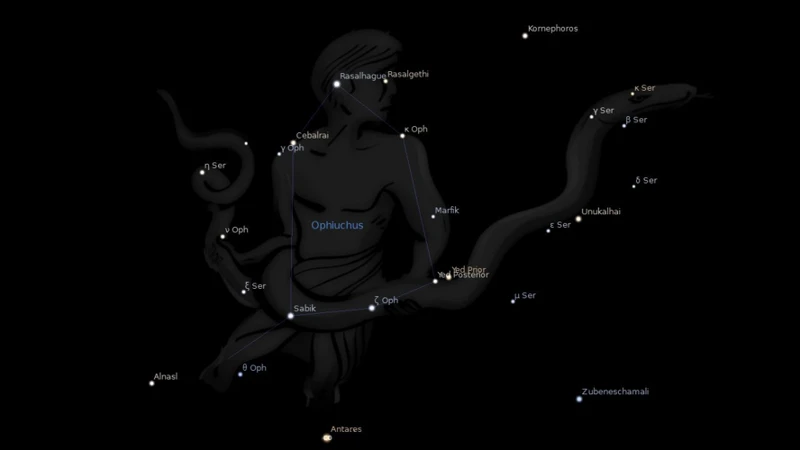
Putting it all together in astrology involves synthesizing the information gathered from various components of the astrological chart. By combining the knowledge of the planets, zodiac signs, houses, and aspects, we can gain a comprehensive understanding of an individual’s personality, strengths, challenges, and life events.
First, examine the planetary placements in the chart. Consider the sign each planet is in, as it influences the expression of that planet’s energy. For example, if someone has Mars in Aries, they may have a strong drive, assertiveness, and enthusiasm in their actions. On the other hand, if Mars is in Libra, they may approach their desires and passions with a more diplomatic and balanced approach.
Next, explore the aspects between the planets. Major aspects like conjunctions, oppositions, trines, and squares provide further insights into how planetary energies are interacting. For instance, a Sun-Moon conjunction signifies a deep integration between one’s conscious and subconscious self, while a Mars-Pluto square suggests potential internal conflicts in assertiveness and power dynamics.
Take note of the dominant elements, modalities, and houses in the chart. The elements (fire, earth, air, water) offer insights into a person’s temperament and preferences. Modalities (cardinal, fixed, mutable) reveal their approach to initiating, stabilizing, and adapting to change. The houses represent different areas of life where the planets and signs manifest their energies.
Consider any patterns or configurations present in the chart. Grand trines, stelliums, and T-squares, for example, give us more information about the individual’s unique patterns and challenges. They indicate areas of focus, intensity, and potential talents.
Lastly, remember that astrology is a dynamic and holistic system. Every individual is unique, and while the astrological chart provides valuable insights, it is important to take into account the individual’s personal experiences, choices, and free will.
As a whole, astrology serves as a powerful tool for self-awareness, personal growth, and understanding the dynamics of relationships and life events. By putting all the pieces of the astrological puzzle together, astrologers can unveil a rich tapestry of information that helps individuals navigate their journey with greater wisdom and insight.
Conclusion
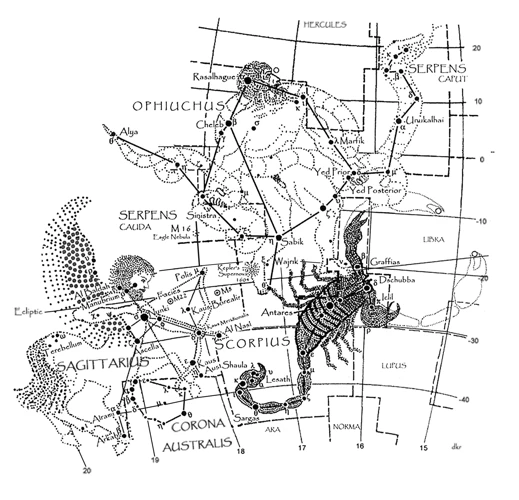
In conclusion, interpreting an astrological chart can be a complex yet insightful process. By understanding the basics of astrology, the components of a chart, and the meanings behind zodiac signs, houses, and planetary aspects, you can unlock a wealth of information about yourself or others. Remember that astrology is not a definitive science but rather a tool for self-reflection and personal growth. It’s important to approach astrology with an open mind and use it as a guide, rather than relying solely on it to predict or shape your future. Each person’s astrological chart is unique, and it’s the combination of different elements that provides a comprehensive understanding of an individual’s life path and potentials. So, dive into the cosmos, explore the depths of your chart, and embrace the wisdom that astrology can offer. Whether you use it for personal insight, relationship compatibility, or simply curiosity, astrology has the power to illuminate and inspire.
Frequently Asked Questions
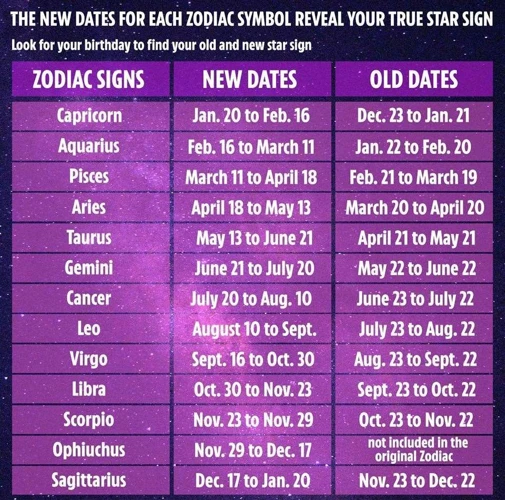
1. Can an astrological chart predict the future?
An astrological chart cannot predict the future with certainty. It provides insights into patterns and tendencies that may play out in a person’s life, but free will and individual choices also come into play.
2. How accurate are astrological charts?
The accuracy of astrological charts depends on various factors, including the skill of the astrologer, the accuracy of the birth data, and the interpretation of the chart. A well-prepared chart, combined with a knowledgeable astrologer, can offer valuable insights.
3. Can I create my own astrological chart?
Yes, you can create your own astrological chart using online resources or astrology software. You will need your accurate birth date, time, and location to generate an accurate chart.
4. Do I have to believe in astrology to benefit from an astrological chart?
No, belief in astrology is not necessary to benefit from an astrological chart. Many people find value in the insights and self-reflection offered by astrology, even if they do not fully embrace it as a predictive tool.
5. How often should I refer to my astrological chart?
There is no set frequency for referring to your astrological chart. Some people find it helpful to revisit their chart during major life events or periods of self-reflection, while others may consult it more regularly for guidance and insight.
6. Can astrology help in making important life decisions?
Astrology can provide guidance and insights that may be helpful in making important life decisions. However, it is important to remember that astrology should be used as one tool among many and should not be solely relied upon for decision-making.
7. Are astrology and astronomy the same thing?
No, astrology and astronomy are not the same thing. Astronomy is the scientific study of celestial objects and their physical properties, while astrology is the belief that the positions and movements of these celestial objects have an influence on human behavior and personality traits.
8. Can astrological compatibility determine the success of a relationship?
Astrological compatibility can offer insights into the dynamics between individuals in a relationship, but it does not guarantee the success or failure of the relationship. Many other factors, such as communication, values, and shared goals, come into play as well.
9. Are there differences in astrological charts for different cultures?
Astrological charts have variations based on different cultural traditions. While the basic principles of astrology remain consistent across cultures, the interpretation and emphasis placed on certain elements may differ.
10. Is it possible to change my astrological chart?
No, your astrological chart is a reflection of the cosmic energies present at the time of your birth. It cannot be changed. However, by understanding and working with the energies indicated in your chart, you can make conscious choices to shape your life path.
References
Frequently Asked Questions

1. How accurate are astrological charts?
Astrological charts can provide valuable insights and guidance, but it’s important to remember that they are based on interpretations and patterns. The accuracy of the interpretation depends on the skill and experience of the astrologer.
2. Can I rely solely on my astrological chart for decision-making?
Astrological charts can offer valuable insights, but it’s important to use them as a tool alongside other factors when making decisions. They can provide guidance, but ultimately, you are in control of your own choices.
3. Can astrology predict the future?
Astrology is not meant to predict the future with certainty. It offers guidance by analyzing patterns and energies present in the chart. It can provide insights into potential strengths, challenges, and opportunities that may arise, but the future remains uncertain.
4. How can I find my astrological chart?
You can get your astrological chart calculated by a professional astrologer or by using an online astrology site. All you need is your birth date, time, and location to generate your chart.
5. What does the rising sign in a chart represent?
The rising sign, also known as the ascendant, represents your outer personality and how others perceive you. It influences your physical appearance, mannerisms, and how you approach new experiences in life.
6. Can I interpret my astrological chart on my own?
While it’s possible to interpret your astrological chart on your own, it can be complex and requires a deep understanding of astrology. It’s recommended to consult with an experienced astrologer who can provide expert guidance.
7. What is the significance of planetary aspects in a chart?
Planetary aspects refer to the angles formed between different planets in a chart. They indicate the energies and interactions between planets and how they influence various areas of life, such as relationships, career, and personal growth.
8. How do astrologers determine the meaning of each planet in a chart?
Astrologers study the symbolism and archetypal meanings associated with each planet. They also analyze the placement of the planet in signs, houses, and aspects to determine its influence and significance in a chart.
9. Can astrology help in understanding relationships?
Astrology can provide insights into relationship dynamics by analyzing the compatibility between two individuals’ charts. It can reveal strengths, challenges, and areas of mutual understanding, helping enhance self-awareness and communication.
10. Are astrology and astronomy the same thing?
No, astrology and astronomy are different disciplines. Astronomy is the scientific study of celestial objects, while astrology is the belief that the positions and movements of celestial bodies can have an impact on human behavior and events.







